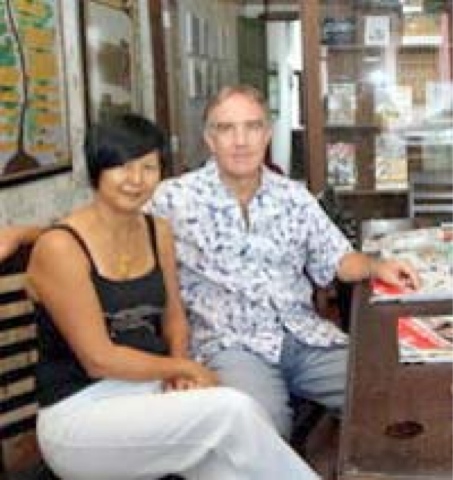Penang Property | Monday November 26, 2012
14 projects approved under density guideline
By WINNIE YEOH
winnie@thestar.com.my
THE Penang Municipal Council (MPPP) has approved 14 projects under the 87 units per 0.404ha guideline since it came into effect in June, 2010.
State Local Government and Traffic Management Committee chairman Chow Kon Yeow said stringent measures had however been imposed on developers to build the increased density units.
“The guideline is not applicable in established housing areas, World Heritage Site, the area from Tanjung Bungah Hotel to Mar Vista, along Gurney Drive, the bordering areas of Air Putih constituency and Air Itam constituency and re-zoning area.
“The floor area for the guideline is also capped at about 1,400sq ft per unit and MPPP has also imposed a price control for 25% of the units,” he said in a press conference at the City Hall in Esplanade yesterday. `
Of the 25%, Chow said developers would have to sell 5% of the units at RM200,000 per unit, 15% at RM300,000 per unit and 5% at RM400,000 per unit.
He said if a developer wished to build under the new guideline, the company would have to build an additional 30% low-cost or low medium-cost units in the same district.
“Developers will also have to submit a traffic impact assessment (TIA) report for the respective projects,” he said.
Chow added that currently 109.26ha of land on Penang island was available for the building of units under the new guideline.
He said this worked out to 8,100 units at 30 units per 0.404ha and under the new guideline, 23,490 units could be built.
Council president Datuk Patahiyah Ismail, who was also present, said there would be no capped floor plan size if developers chose to build 30 units per 0.404ha.
“With the 87 units per 0.404ha guideline, we can in a way curb super condos and the issue of expensive prices,” she said.
In recent news reports, many Penangites questioned the need for the guideline as they were concerned that higher density may lead to social and environmental problems for the existing residents.
The 14 projects which have been approved are in Jalan C.Y. Choy, Jalan Macalister, Jalan Seang Teik, Lorong Perak, Sungai Ara, Bukit Gambier (two projects), Lembah Permai, Jalan Jelutong (two projects), Jalan Paya Terubong, Jalan Perak, Jalan Tanjung Tokong and Jalan Pantai Jerejak.
Source reference link: http://thestar.com.my/metro/story.asp?file=/2012/11/26/north/12369232&sec=North
Back to Main Page: www.VulcanInternational.blogspot.com
14 projects approved under density guideline
By WINNIE YEOH
winnie@thestar.com.my
THE Penang Municipal Council (MPPP) has approved 14 projects under the 87 units per 0.404ha guideline since it came into effect in June, 2010.
State Local Government and Traffic Management Committee chairman Chow Kon Yeow said stringent measures had however been imposed on developers to build the increased density units.
“The guideline is not applicable in established housing areas, World Heritage Site, the area from Tanjung Bungah Hotel to Mar Vista, along Gurney Drive, the bordering areas of Air Putih constituency and Air Itam constituency and re-zoning area.
“The floor area for the guideline is also capped at about 1,400sq ft per unit and MPPP has also imposed a price control for 25% of the units,” he said in a press conference at the City Hall in Esplanade yesterday. `
Of the 25%, Chow said developers would have to sell 5% of the units at RM200,000 per unit, 15% at RM300,000 per unit and 5% at RM400,000 per unit.
He said if a developer wished to build under the new guideline, the company would have to build an additional 30% low-cost or low medium-cost units in the same district.
“Developers will also have to submit a traffic impact assessment (TIA) report for the respective projects,” he said.
Chow added that currently 109.26ha of land on Penang island was available for the building of units under the new guideline.
He said this worked out to 8,100 units at 30 units per 0.404ha and under the new guideline, 23,490 units could be built.
Council president Datuk Patahiyah Ismail, who was also present, said there would be no capped floor plan size if developers chose to build 30 units per 0.404ha.
“With the 87 units per 0.404ha guideline, we can in a way curb super condos and the issue of expensive prices,” she said.
In recent news reports, many Penangites questioned the need for the guideline as they were concerned that higher density may lead to social and environmental problems for the existing residents.
The 14 projects which have been approved are in Jalan C.Y. Choy, Jalan Macalister, Jalan Seang Teik, Lorong Perak, Sungai Ara, Bukit Gambier (two projects), Lembah Permai, Jalan Jelutong (two projects), Jalan Paya Terubong, Jalan Perak, Jalan Tanjung Tokong and Jalan Pantai Jerejak.
Source reference link: http://thestar.com.my/metro/story.asp?file=/2012/11/26/north/12369232&sec=North
Back to Main Page: www.VulcanInternational.blogspot.com










